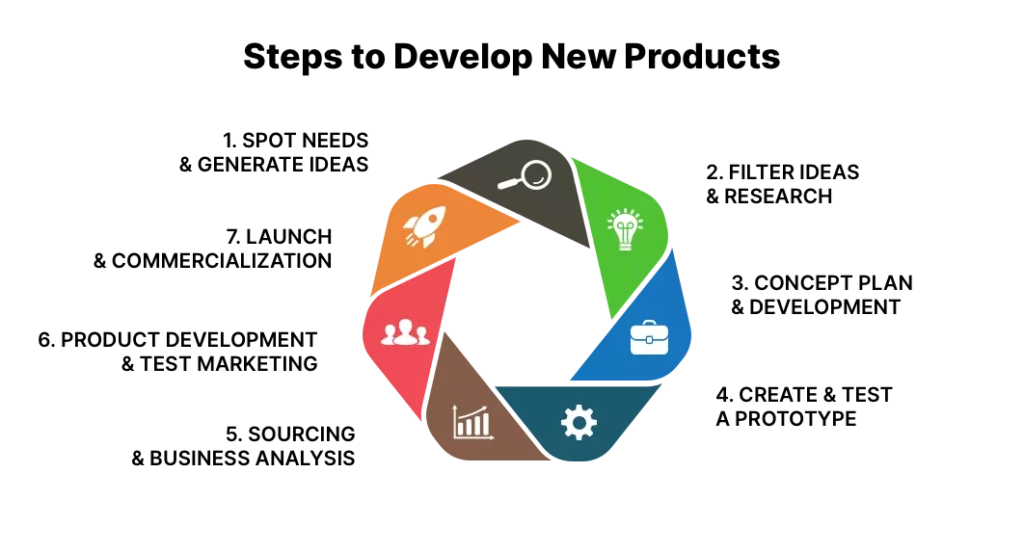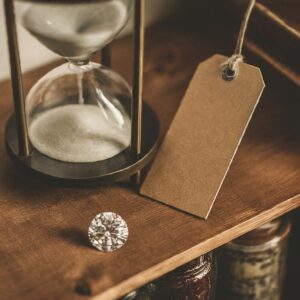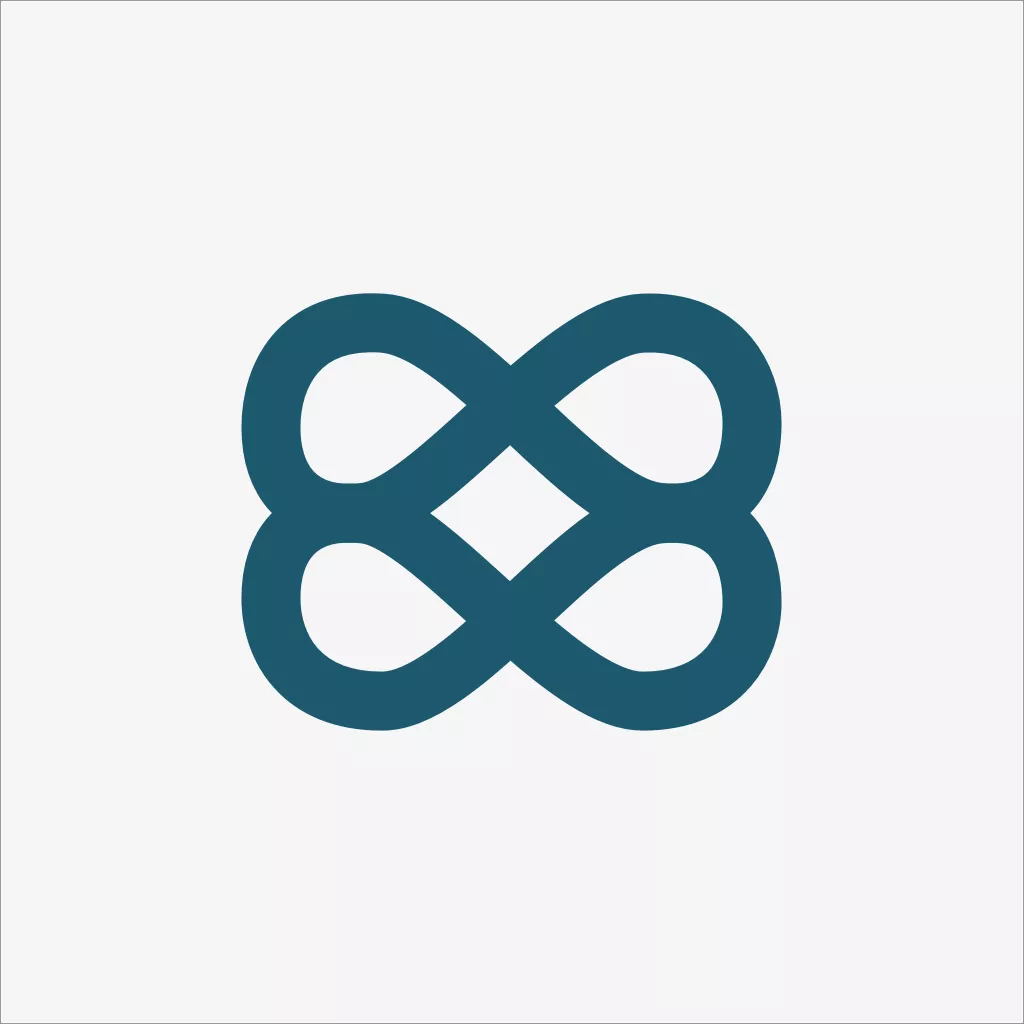We have all wondered how our favorite products have come into existence or have wanted to create our products to sell. Yet it can all seem too complex or ‘scary’. How to develop new products? Where do you get the material? How do you find a factory that can mass-produce it? It seems as if a secret language only some people understand.
The truth is it can be a very different experience for every new product made. The following, however, are some of the most consistent steps taken by many of the giants before us, from the starting concept to the final step, the marketplace. Read on to learn how to develop new products successfully.
7 Steps to Successfully Develop New Products
Let’s dive right into it: How to develop new products? Here are the 7 steps that you should follow.

1. Spot Needs and Generate Ideas
This is the place where most companies and entrepreneurs struggle. “The first step is always the hardest” as the adage goes, rings very true when it comes to product development. Coming up with what you want to sell is harder than figuring out the process. You can create a quality item but it would mean nothing if it doesn’t sell. If there is no demand for your product, as a need or want, then it will be bound to fail. This also means that this first stage defines all later steps to develop new products.
Luckily, there are various ways to find inspiration for product ideas. Whether or not you or your company already have an idea of what product or industry you want to do business in, analyze market trends. What kind of products are ‘flying off the shelves’ (locals and online)? Is there something a particular group of people needs that you can provide with a product or service? Coming up with an on-demand product is all about catching a great opportunity when it presents itself. By being observant, you can decide if to pursue the creation of a brand-new product or a somewhat significant improvement over an existing one.
2. Filter Ideas and Research
The next checkpoint in developing a new product is to cut down on the number of ideas being considered. Although the goal will always be to come up with as many great product ideas as possible, realistically you will only be able to handle 1-2 at a time. It takes a large amount of time and money to create, produce, and launch a product. It would be fiscally irresponsible to take multiple product development projects at a time. The cost of manufacturing products increases exponentially later on in the process…
Do a lot of in-depth research on the trends where your product is in high demand. The more you know about it, the easier it’ll be to shift through the ideas you have and select the one that fits most people’s needs and your goals. Get well acquainted with your potential competitors, what do they have that people like? What can your product do better? What is missing in this field? Obtain as much feedback (family, friends, strangers) as you can. No matter how invested in the product you are if it’s not going to sell – it’s money down the drain.’
3. Concept Plan and Development
Now that you have an idea of what your product will be, the process will get more complex from here on. You may still wonder how to develop new products as so far, nothing tangible has been developed. To begin, you should have a comprehensive schematic or sketch of the product’s design with all of its detailed features and functions properly shown. Be as specific as possible, labeling everything from different materials to colors, patterns, etc. You can hire freelance graphic designers off of sites like UpWork and Fiverr, to bring the concept to life.
Once all of this is done, begin vetting and comparing the costs of suppliers, and figure out the materials you plan on using on your product and why. With this information in mind, calculate the possible market value of your product, where it leaves a good percentage of profit but it’s still affordable to your target audience. For example, Tom’s shoes are of a simple design yet became extremely popular because of their cause, donations, and branding behind the business, including using over 80% recycled materials.
4. Create and Test a Prototype
Prototypes, or mockups, are sample products to test before reaching production scale-up. Prototypes are not only great for visualizing the product better but also for rudimentary or spontaneous presentations to potential investors or customers. It’s common for them to be made of different materials than the product is intended. Some architects, for example, make scaled-down paper/carton versions of the structures they wish to construct. Others with less or no experience making such things can always outsource it to a specialized 3D printing or CAD freelancer.
Since prototypes are the test dummies of your product, this is a critical step in developing new products. It requires a considerable amount of patience and attention to detail. The product sample will be an estimated representation of what the product would look like after mass production. They are known as the minimum viable product (MVP). Prototypes are excellent tools to help you identify and work out the kinks that it might have before it is ready to launch. Do not get disheartened if you go through several prototypes. It is natural to have to change and rearrange its design before the product is truly finished.
5. Sourcing and Business Analysis
When you think about how to develop new products, you probably do not think of sourcing very much. However, the search for the ‘holy grails’ of material vendors and investment partners begins at this stage of new product development. Depending on what kind of business you have, a storage or warehouse might be needed to house your product. You might need to factor in shipping costs on your budget. The best thing you can do is create a spreadsheet to keep a log to compare suppliers’ prices and quality. Having an organized information system will help you save time, compare the quality of materials, and stay within budget.
Business analysis is a detailed review of the product’s sales projections. It takes into account everything from competitors’ products, to making sure everything aligns with your company’s aspirations, to random market surveys by volunteers. Customer feedback is crucial throughout the new product development process. Many products have failed because they were too much about what the company wanted to provide and not about what the customer wanted or needed. From this data, you should be able to determine what your sales range is and the risk-vs-reward ratio of your product.
6. Product Development and Test Marketing
If you just wanted to know how to develop new products, you might think that we are nearly at the end of the process. However, the actual product development itself hasn’t even started yet. At this point in the process, you should have a couple of full prototypes of the finished product. They should be tested by focus groups on all of their capabilities and make any necessary last-minute changes before mass production begins. According to the type of product you are launching, especially if it’s anything in tech, you should have professionals check its safety measures thoroughly. In-house experts can do it. However, it is also recommended to outsource it to a third party for unbiased results.
Many fool-hearted entrepreneurs and companies make the mistake of rushing through the test marketing analysis. When this step is rushed there is no way to guarantee that the product won’t flop for lack of thorough evaluation. This test run gives the marketing team a good taste of how the customers react to the chosen strategy and work on any changes that seem necessary. These trial runs cover everything from advertising to packing. They give you great estimates as to how it will unfold when the product is finally introduced to the marketplace.
7. Launch and Commercialization
One of the most exciting, nerve-wracking moments of any new product development process is the long-awaited launch day. There are many beneficial methods in which a company or entrepreneur might launch a newly developed product that will generate first-day sales. A party is the most common method. They can range from conservative affairs to wild events, depending on the customer-targeted demographic.
Commercialization is the final step in developing new products. This is the conclusion of the short to long-term plans developed in step 3. And it’s the step that doesn’t truly end. After a well-executed launch, a new product will only have so much social quota before something else catches the public’s eye. The advertisement options chosen need to combat this natural lull and cause the customers to renew their interest. Instagram and TikTok have shown to be incredible tools for marketing products with great engagement rates. Since 2020, social media posts with teaser videos or launch countdowns have become quite popular to use. A viral post of a product can mean the difference between growth and scaling.
Conclusion
Out of the unfathomable amount of product ideas produced at any time, only a small quantity makes it to mass production, with many ‘dying’ along the process. There will always be risks in a new product development endeavor. Nevertheless, following these steps to develop new products can help your product end up inside thousands of homes. New product development is a complex process. However, if you know how to develop new products, new product development becomes a very doable process. All you need is enough vision, planning, and gumption to analyze and take calculated risks.




